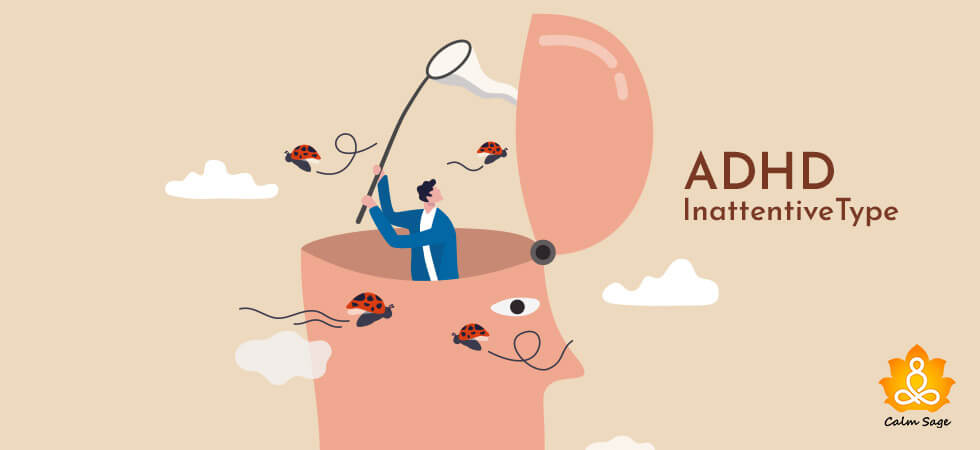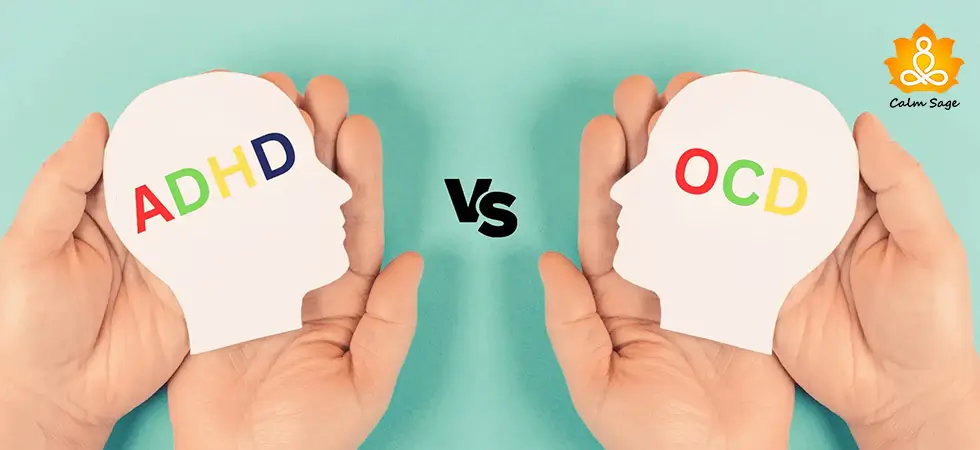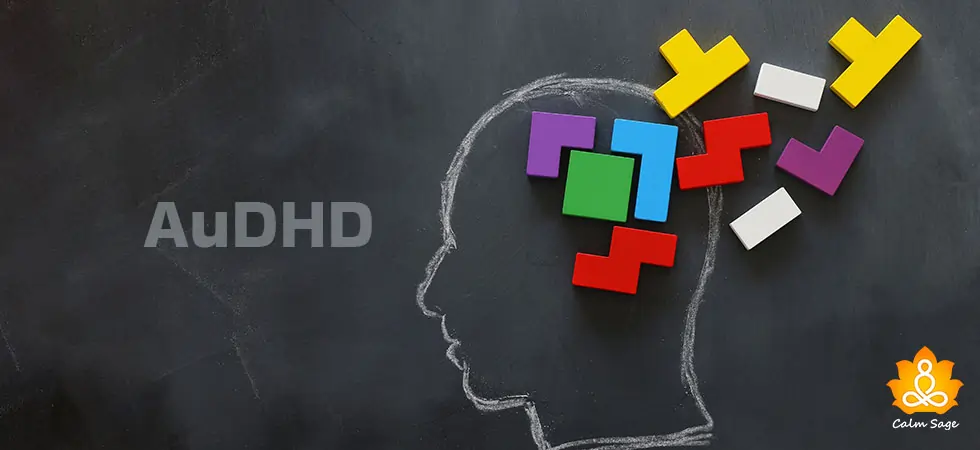Understanding Inattentive ADHD Type In Adults And Children

One of the warning signs of attention-deficit hyperactivity disorder (ADHD) is inattentiveness, and when most of the symptoms of ADHD revolve around lack of focus, concentration, or attention, a person is likely to get a diagnosis with an inattentive type of ADHD. Well, there are three types of ADHD, predominantly inattentive type, predominantly hyperactive, and combined type of ADHD.
In today’s blog, we are going to specifically talk about inattentive type of ADHD which can also be referred to as ADHD-PI or predominantly inattentive type of ADHD. This subtype of ADHD is a part of the Diagnostic and Statistical Manual of Mental Disorders 5th Edition Revised Version (DSM-5-TR) under the ADHD “specifiers section.” In the next section, let’s take a look at what inattentive ADHD in adults or children means.
What is the Inattentive ADHD Type?
The inattentive type of ADHD is mentioned in the DSM-5 as a “specifier.” The term “specifier” is used to add clarity to a specific type of diagnosis so that psychotherapists can create targeted treatment plans. In the cases of an inattentive type of ADHD, a psychotherapist has been informed of specific characteristics of ADHD such as trouble organizing spaces or projects, difficulty following instructions or conversations, unable to focus on long-format teachings (lectures), or unable to start or finish tasks.
Research shows that someone diagnosed with ADHD inattentive type can also experience symptoms related to impulsivity or hyperactivity. In such cases, the majority of symptoms revolve around inattention or lack of concentration. If some experience both types of ADHD symptoms equally (inattentive and hyperactivity-impulsivity), they are likely to get a diagnosis for the combined type of ADHD.
Quick Fact-Check Related to Inattentive Type:
- Around 30% of people struggling with ADHD are specifically diagnosed with inattentive type.
- Inattentive ADHD type is more common in women than men.
- The symptoms of inattentive type ADHD are more subtle which is why it can be difficult to diagnose this type of ADHD.
- Children with the inattentive type of ADHD are less disruptive as compared to the children diagnosed with the hyperactivity-impulsivity type of ADHD.
- Inattentive ADHD type can also co-occur with other mental health disorders such as anxiety disorders, depression, autism, and substance abuse.
- Symptoms related to ADHD change over time. Therefore, if someone gets a diagnosis for inattentive type, the symptoms could change in the
Symptoms or Characteristics of ADHD Inattentive Type
Symptoms of inattentive ADHD type in adults and children are primarily displayed through inattentiveness. Below listed are some of the common symptoms of ADHD inattentive type:
- Avoids tasks that require focus or attention to details
- Being disorganized or forgetfulness related to tasks
- Continuously loses personal valuables or belongings
- Easily distracted
- Frequently makes careless mistakes
- Inability to follow instructions or not appearing to listen during conversations
- Inability to pay close attention or focus on details
- Inability to start or complete task
- Lack of concentration or difficulty focusing at work or school
- Unable to complete assignments, tasks, or other important activities
In order to diagnose inattentive type ADHD in children, children or teenagers must be below the age of 17 and they must exhibit at least six symptoms. Moreover, people experiencing inattentive ADHD type may also show symptoms associated with impulsivity or hyperactivity such as:
- Constant interrupting or intruding
- Difficulty remaining seated for longer periods
- Impatient
- Restlessness
- Responding to questions without listening or not waiting for their turn
- Tapping, squirming, or fidgeting
- Talking a lot while undertaking leisure activities
- Too much talking
Causes of ADHD Inattentive Type
The exact cause behind the development of ADHD inattentive type is not known as of now, however, research shows that some factors may contribute to the development of ADHD such as:
- Environmental factors: Early contact or consumption of toxins during pregnancy or infancy can increase the risk of developing an inattentive type of ADHD in children. Additionally, research shows that certain environmental factors also play an important role in the development of ADHD at early stages.
- Genetics: Research shows that genetics plays an important role in the development of ADHD in infants, children, or adults because genes related to this condition pass through heredity. I could find several evidence-based studies that revealed the connection between ADHD and genetics.
- Premature delivery or low birth weight: Research shows that premature babies or babies born with low birth weight can also be at a high risk of developing ADHD in babies. If not during infancy, toddlerhood, or adolescence, they can develop ADHD in adulthood.
- Substance abuse: Pregnant mothers who consume alcohol put their babies at risk of developing ADHD. Additionally, extensive substance abuse during pregnancy or while breastfeeding is also linked with the development of ADHD in babies.
In addition to this, below are some of the other factors contributing to inattentive type ADHD:
- Childhood trauma
- Brain injury
- Structural brain changes
- Extreme stress during pregnancy
Diagnosis of ADHD Inattentive Type
Inattentive type ADHD or any kind of ADHD in adults or children can only be diagnosed by a certified or experienced mental health professional. During diagnosis, a mental health professional is likely to make a diagnosis based on:
- Detailed questionnaire revolving around personal or family medical history
- Ratings or checklists based on the severity of symptoms
- A detailed interview with the mental health professional or psychologist
- A detailed interview with teachers, family members, parents, or siblings
- Other important tests such as blood tests, physical examination, and scanning to rule out the presence of other possible conditions
In order to be diagnosed with inattentive ADHD or any other ADHD type, it’s important to follow the criteria mentioned in the Diagnostic and Statistical Manual of Mental Disorders 5th Edition (DSM-5). Below listed are some of the important criteria to be diagnosed with ADHD:
- An individual must have symptoms for more than six months.
- An individual must have ADHD-related symptoms before the age of 12.
- The symptoms related to ADHD must be severe and they must be interrupting overall quality of life or normal functioning.
- The symptoms of ADHD must be severe in that they result in a lack of concentration or focus at work or school.
- The symptoms must not collide with the presence of other mental health conditions.
Treatment of ADHD Inattentive Type
Treatment of ADHD or inattentive type ADHD usually helps in increasing focus, attention, or concentration. Throughout the treatment process, a professional can help reduce difficulties related to work or school or the management of symptoms. Psychotherapy and medications are the frontline treatment methods for ADHD inattentive type in adults or children. Let’s take a look at the treatment types:
Medications
There are several medications available for treating ADHD in adults and children which are FDA-approved. Medications are generally prescribed to treat specific symptoms, improve brain functioning, and increase dopamine levels. Below are some of the commonly prescribed medications for treating inattentive type ADHD:
- Antidepressants
- Stimulants (Amphetamines, Methylphenidates)
- Non-stimulants (Atomoxetine, Guanfacine, Clonidine)
Psychotherapy options for ADHD Inattentive Type
Psychotherapy can be a really effective and beneficial option for people struggling with inattentive type ADHD. Psychotherapy helps in managing the condition and improving focus. Below listed are some of the effective therapy options for treating inattentive type ADHD:
1. Behavioral Therapy
Behavioral therapy helps monitor and change problematic behavior.
2. Cognitive behavioral therapy (CBT)
CBT helps in replacing problematic thoughts or behaviors with positive ones. Additionally, it also teaches effective coping skills.
3.Family therapy
Family therapy helps in learning how to support a family member struggling with ADHD and how to establish positive interactions with them.
4. Social Skills training
Social skills training helps in encouraging positive behaviors in ADHD children and adults by discouraging negative behaviors.
5. Parent-Child Interaction Therapy (PCIT)
PCIT helps in improving focus and bond between parent-child to help manage symptoms associated with inattentive ADHD type.
Living with ADHD Inattentive Type for Adults and Children
Here are some quick and effective tips for dealing with inattentive type ADHD for adults and children:
Adults Guide
- Take the help of ADHD management apps to reduce distractions and work productively.
- Divide lengthy tasks into short-term tasks to achieve goals before time.
- Take plenty of activity breaks while working so that you can focus more.
- Focus on an activity that interests you every weekend.
- Follow a strict and healthy lifestyle to improve overall well-being.
- Appreciate or reward yourself after completing tasks.
- Take the help of organizational tools.
- Communicate your problems with a loved one or family member
Parent’s Guide
- Divide study and activity timing into short so that children can learn productively.
- Join a support group to connect with parents so that you can learn more about the condition
- Track symptoms and triggers for effective disorder management planning.
- Stay connected with your mental health provider.
- Limit different choices to improve focus and attention.
- Provide simple and clear instructions.
- Learn more about the disorder so that you can take the help of self-help techniques.
- Follow a strict and healthy lifestyle to improve overall well-being.
- Communicate regularly with your children.
ADHD Resources for Disorder Management and Coping
Below listed are some of the best resources for managing ADHD in children or adults:
- Educator: The ADHD Lady
- Social Media: Neurodivergent Rebel
- LGBTQ ADHD Educator: Neuroqueer
- Support Organization: Children and Adults with ADHD (CHADD)
- Support Organization: Attention Deficit Disorder Association (ADDA)
- Podcast: ADDitude ADHD Experts Podcast
- Podcast: Adult ADHD ADD Podcast
I hope this blog helps you understand ADHD inattentive types in adults and children. For more such content, connect with us through all social media platforms.
Thanks for reading!




















